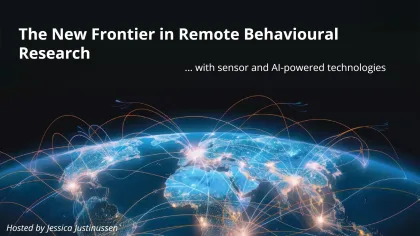About the webinar
In today’s society, computer screens comprise a fundamental part of our daily lives. In a 2022 survey, 80% of remote workers spent – on average – 13 hours in front of a screen. In addition to work, video games constitute a significant part of the lives of over 3 billion people worldwide, with people under 34 constituting over 50% of the nearly 2.5 billion video gamers in the US. The majority of the office workers and video gamers will sit down during their computer activities, which is known to have long-term adverse effects on their health, including but not limited to musculoskeletal disorders and hypertension. This challenge underscores the urgent need for developing ergonomic seating designs that are proven to counter these negative health effects. Mauro Usability Science (MUS) recently developed and validated the first fully integrated neuroscience-based human factors and ergonomics testing platform for seating systems during video game play. Utilizing iMotions’ multimodal biometrics research platform, MUS captured 29 real-time measures of cognitive, ergonomic, and psychophysiological states over extended periods of screen time using 3D spatial tracking, eye-tracking, galvanic skin response, facial expression analysis, and additional sensors. With this approach, MUS was able to assess the ergonomic benefits of a novel seating design, with implications for workstation design, video game design, and skill acquisition. This webinar will dive into how MUS carried out this study, and the essential aspect of collaboration, multimodality, and innovation across three different groups. The webinar will be a valuable experience for any researchers interested in multimodal biometric research applications, and human factors and ergonomics researchers will find the webinar particularly inspiring for their own research endeavors.
iMotions Ergonomics Research Lab
Synchronize data collection from multiple biosensors, allowing researchers to investigate complex research questions in innovative and time saving ways.







